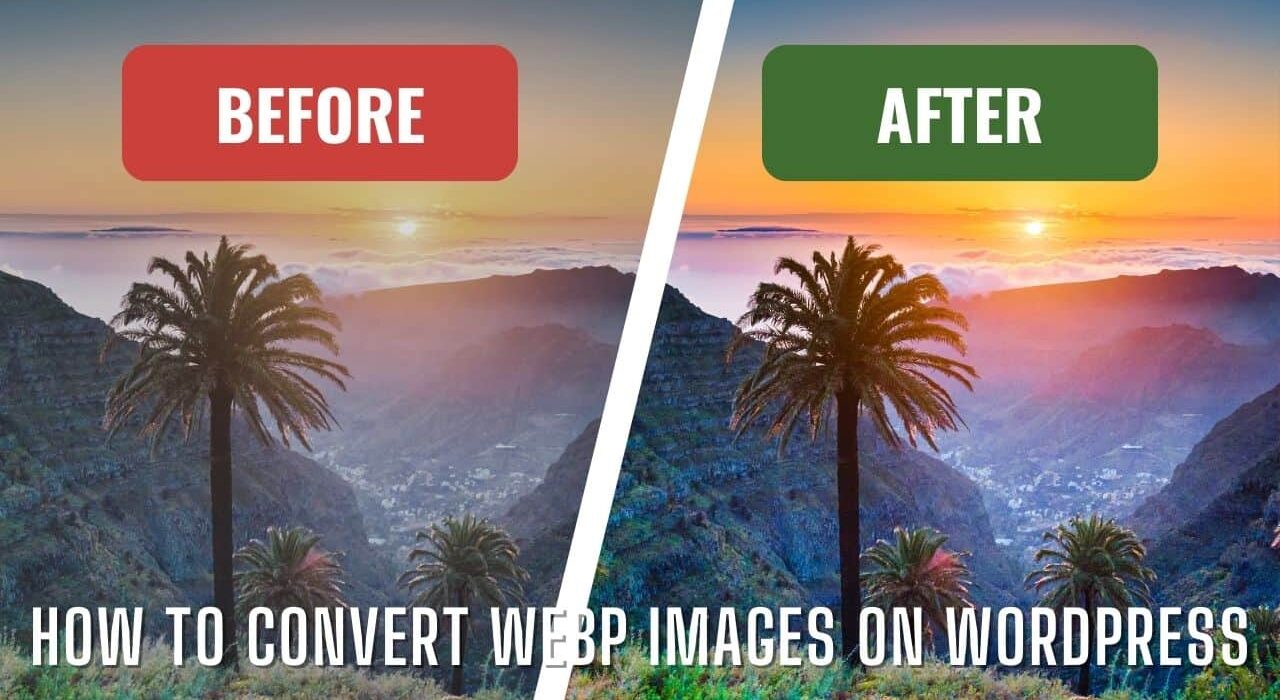WebP is a format developed by Google to reduce the size of images without having to sacrifice quality. Traditional formats such as JPG, GIF and PNG are heavier and often slow down page loading and provide a poor user experience. In this article, we will discuss the benefits of convert WebP images and provide step-by-step instructions on how to convert and optimize them on WordPress.
In the next lines, we will indicate how to change the format of photos and upload them to a WordPress site. All this offers an overview of what are the best plugins out there.
Table of contents
- What are WebP Files
- How to Convert WebP Images on WordPress
- Express
- Optimole
- ShortPixel Image Optimizer
- Imagify
- SmushPRO Image Optimizer
- Resizing App
- Conclusion
What are WebP Files
Like JPEG 2000, AVIF, and XR, WebP is the next-gen format, with files that offer higher image quality, while smaller sizes support transparency and animation.
According to Google, they have better compression, which allows them to be up to 26% smaller. Most users already see them, but for those who are excluded, solutions are needed.
How to Convert WebP Images on WordPress
Uploading images to WebP on WordPress sites is no different than saving them in traditional formats. Just use the editor to:
- Open the page where you want to place them
- Click on “Upload media”
- Enter the alternative text, to make sure that Google interprets them from an SEO perspective.
If you use the Gutenberg block editor, just insert a new image block first and then upload the image. But beware: this is only valid starting with WordPress 5.8, which supports WebP images without the need for plugins; For all other versions, we recommend using some tools.
Express
It is fast and keeps JPEG and PNG originals, making all users see WebP images. Webp Express is also easy to set up,
Entering the Conversion Method you have an overview of how Web Express works, so you can choose the compatible mode, (ie the one that uses your site). Finally just select the Convert on upload checkbox and click on the Bulk Convert button.
The checkbox tells the site to convert future images as well, and Bulk Convert is to kick off the process for all images, at once.
Scrolling up, you can choose the type of format to convert, whether JPEG and PNG or only one of the two; You can also set compression thresholds: the default ones are greater than 50%.
Optimole
Optimole is an almost totally automated “all-rounder” WordPress plugin. Like Shortpixel and Imagify, Optimole can be downloaded for free, but the basic versions allow you to convert a limited number of images. At no cost, you get:
- Optimizations up to 5 thousand visits/month,
- Also, support for AVIF format,
- Image uploading to the Optimole cloud and cross-platform synchronization,
- Optimization through Artificial Intelligence algorithms and responsive images,
- Retina screen support,
- “Smart cropping” per il resizing,
- Visual stability during scrolling,
- Adding watermarks,
- Photos up to 40% smaller, (in case of extraordinary traffic),
- Compatibility with WordPress 5.0,
- Speed up image downloading,
- Lavoro in the background,
- Configuration in a few clicks,
- Complete uninstallation,
In addition, with the Premium version, you can optimize photos for WordPress sites that get more than 25 thousand visits per month.
ShortPixel Image Optimizer
The unpaid version of ShortPixel offers 100 credits per month, (which are not spent if the image is optimized for less than 5%). This tool can be used simultaneously on multiple WordPress sites and provides:
- Support also for other NextGEN images,
- Support for images uploaded through Modula or via FTP,
- HEIC image support, with direct loading from iPhone,
- Compression of the highest level (glossy) for photographers,
- Lightning-fast compression and optimization testing,
- “Smart cropping”, also for e-commerce miniatures.
- Lavoro in the background,
- Retina screen support,
- Two image resizing options,
- CMYK to RGB conversion,
- Conversion from PNG to JPG,
- Compatibility with WordPress, HTTP and HTTPS based sites,
- Compatibility with e-commerce based on WooCommerce and other plugins for sales,
- Backing up images to a local server,
- Group optimization of photos,
- No size limit,
- Reports and statistics by month,
- Economic plans for non-profits,
- 24/7 assistance.
In addition, this plugin ensures maximum compatibility and integration with Cloudflare, a content delivery network to improve the speed and security of websites. This feature, among other things, can be activated in just one click from the Manager panel to support the performance of our Web Hosting.
Imagify
Imagify is also an all-in-one plugin, able to guarantee:
- Asynchronous bulk and automatic optimization,
- Conversion to WebP format, even from PDF and GIF files,
- Lavoro in the background,
- Automatic and proportional resizing for very large images,
- The original version of the image,
- Optimal encoding.
The free version allows you to convert and compress up to 20MB of images (or about 200 photos) per month, including WebP.
SmushPRO Image Optimizer
SmushPRO Image Optimizer is perhaps the least complex and also cheapest all-in-one WordPress plugin. It allows, in fact, to:
- Compress and reduce JPG and PNG images in WebP, even in 3x,
- Optimize photos in bulk,
- Perform performance tests also for mobile,
- Work in the background,
- Improve errors reported by PageSpeed Insights,
- Reconvert WebP,
- Also be used on sites that use another CMS
- Activate in one click, on all sites,
- Have a backup of the original images,
- Also be used on devices with Retina, Amazon S3 and Gutenberg,
- Generate analytics e-report.
Resizing App
It is Google’s free tool that, in a very simple way, allows you to:
- Resizing and cutting photos,
- Convert WebP Images to JPEG, PNG, BMP, or, TIFF
- Comprimerle.
Giving you the ability to choose parameters, such as height, width, or percentage in pixels (also ideal for social media), all locally, via browser.
Conclusion
The WebP format is useful to make your WordPress site, but not only, faster and therefore more attractive to Google, also favoring a positive user experience.







